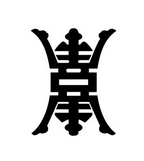Longevity and the Tibetan Tradition
Longevity and the Tibetan Tradition
by, Lama Rangbar Nyima Ozer
According to the Tibetan Vajrayana system of Buddhism there are several factors which influence one's longevity or life span. In fact, if one looks very deeply into the issues, it can even be said said that longevity and life span are not exactly the same thing.
Many of the longevity practices in the vajrayana system have titles such as the essence of deathlessness or the immortal life Bindu, etc. The system is as much concerned, if not more concerned, with enlightenment as it is with a long life. Since enlightenment in its full sense, means that one has broken through the concept of life and death of the body, naturally the word longevity then, deals with continuity or flow. In fact, there is a generally understood principle that if one is currently in a life in which one is committing more negativity than positivity, that a long life is not necessarily useful. That being said, if one is on the other hand, pursuing a path or paths that are virtuous or altruistic, then, in such a case, a long life suits both the practitioner and those whom he or she serves. With this as a background or basis for extending one's life, with this motivation we take on the practices.
Several factors influence longevity such as one's own karmic obscurations, environmental factors, group or collective karma, and mental states in general. Most importantly, the state of mind influences the choices we make, the habits we develop and the body reacts or copes with the results of these choices. Finally, death can come simply by the story of one's life "running out of fuel" or the body not being able to respond to the demands of being and the lessons required. In general, exceptional spiritual progress tends to equate with a better internal chemistry.
Without getting into the utmost subtle or abstract factors, generally one's continuum rests in the display of the three doors of body, speech and mind. If we call these by other identifying names we can say the nerves, (body) the winds, airs or impulses that ride on the nerves (speech level), and our seed essences upon which the mind can either rest or become a turbulent mess.
The three humors of bile, wind and phlegm are in fact manifestations of the three main poisons of mind or in another way of saying, the manifestations of the basic concepts we have as to our nature or identification processes regarding ignorance, desire, and rejection which are the three main modes of ordinary dualistic perception. These three on their pure unadulterated forms, power the internal processes of digestion, blood production and spreading of life forces throughout the body. When our grasping or hatred or sloth (ignorance) become out of control or too enflamed, they start to cause resulting chemical changes in us that stress our organs causing a fatigue and build up of resistance or stagnation. One can say that mental fixation in general, causes stagnations in our flow of mind, spirit and body.
Conversely, if one works to dissolve the dualistic habitual tendencies in one's life and perception, one can in fact set forth a new pattern of flow. One can say that if left to its own unadulterated natural state, the body knows perfectly well what it must do, just as you know what to do when your bladder ifs full.
The conclusion one can easily draw from even a modicum of practice experience, is that developing good habits of mind is critical to good health, longevity and life span. For this, a system of meditation is essential as there is no other way to cut through the traffic of erroneous signals we are sent from our environment, both man made and habitual. From the Vajrayana viewpoint, a medical treatment that disregards how the patient works with state of mind is like a bird with one wing. Conversely, there are few diseases that are truly untreatable if dealt with in a context of early identification and a valid system of meditation guided by an experienced practitioner. From this point, a myriad of healing systems reveal themselves ranging from those which pacify diseases and their causes to those that wrathfully strike-up or invoke the body's natural defense mechanisms which follow the mind's subtle instructions. All of these methods can be found in various medical tantras of the Nyingma or ancient tradition (for example), and in the original medical tantras of Yuthok.
For more information on those tantras please visit the Bodhivastu Foundation for Enlightened Activity.

